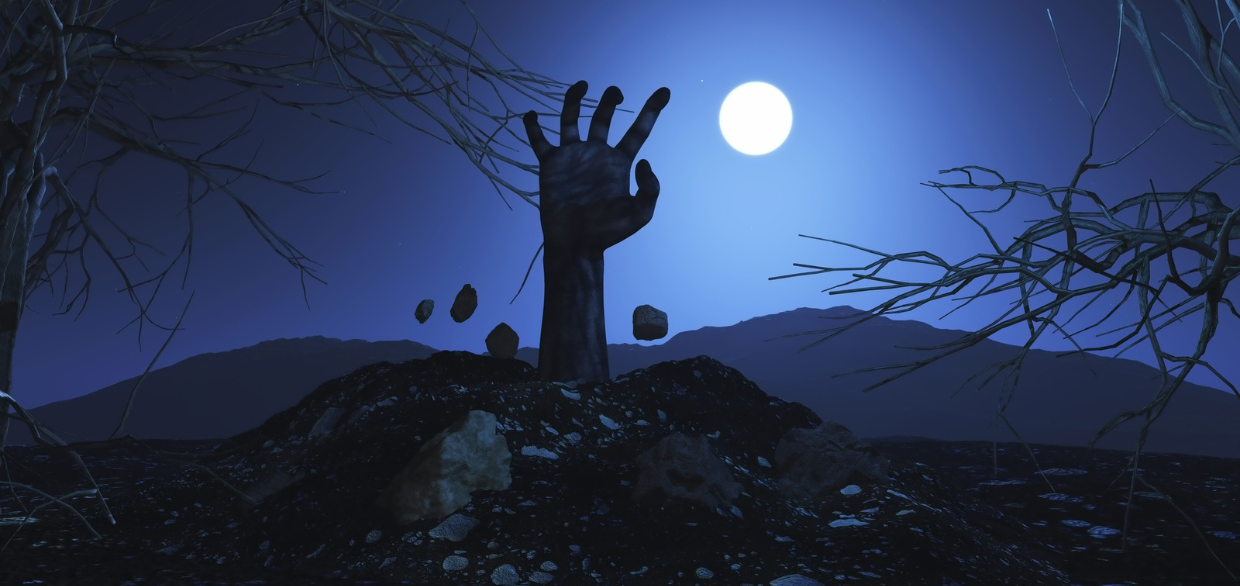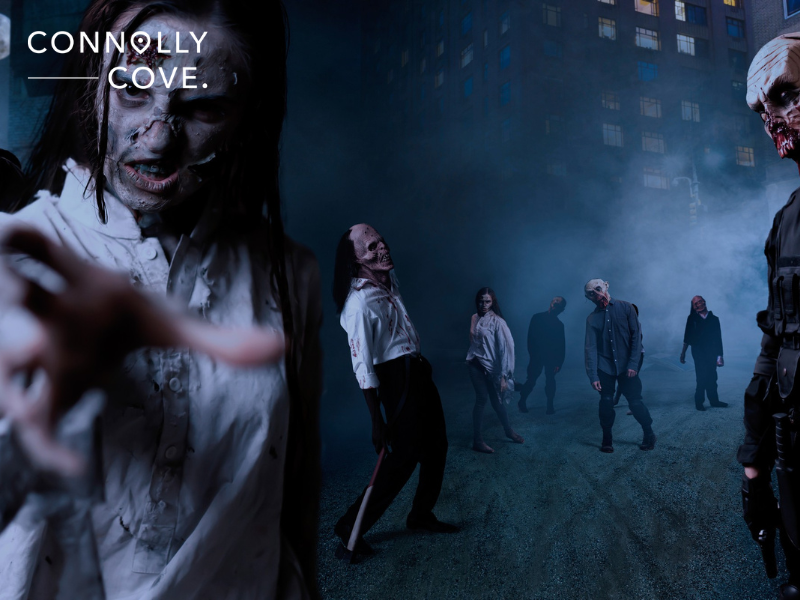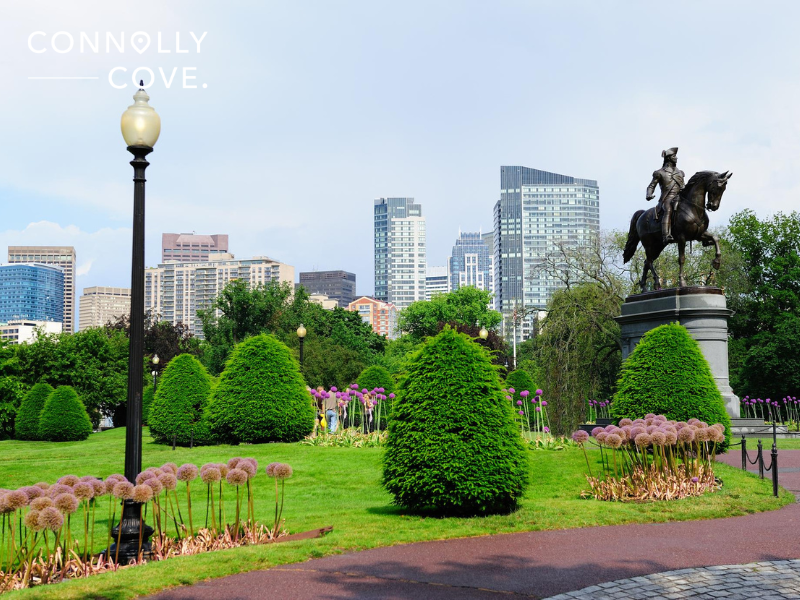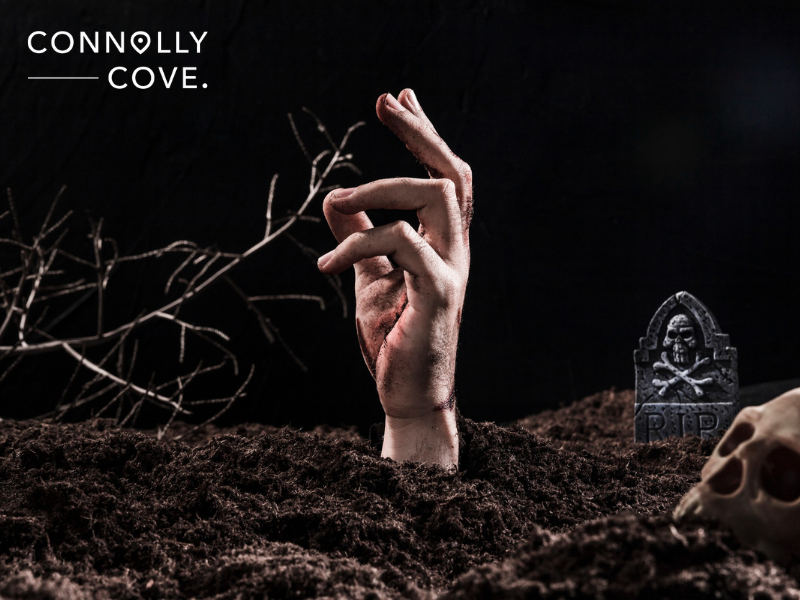The Walking Dead’s Georgia: Exploring Iconic Zombie Apocalypse Sites

Updated On: March 04, 2024 by Maha Yassin
With its sprawling landscapes and eerie, deserted town, Georgia has played host to one of television’s most gripping portrayals of the zombie apocalypse—the critically acclaimed series The Walking Dead. Fans and thrill-seekers alike have been captivated by the show for its intense character arcs, suspenseful storytelling, and the authentic locations that provide the backdrop for the apocalypse. As such, many of these sites have become pilgrimage destinations, offering an immersive experience into the heart of Walker territory.
By visiting these landmarks, we can trace the steps of our beloved survivors, from Rick Grimes’ first terrifying encounters in a desolate Atlanta to the rustic charm of the fictional town of Woodbury. These settings silently witness the struggle between the living and the undead, providing a tangible connection to the show’s most memorable moments. For those inspired by The Walking Dead, exploring Georgia’s zombie landscapes offers a unique blend of fiction and reality as one navigates the places where humanity’s end was so convincingly depicted.
The Walking Dead Phenomenon

In examining the colossal success of The Walking Dead, it’s imperative to acknowledge the franchise’s origins and the cultural tidal wave it has spurred, alongside its seamless translation from comic panels to television screens.
Origin and Cultural Impact
The global frenzy for The Walking Dead began with the launch of the comic book series in 2003, penned by Robert Kirkman. This post-apocalyptic tale, steeped in the grim reality of a walker-infested world, magnetised a legion of avid readers. Its gripping narrative of survival and humanity resonated, spawning a subculture dedicated to zombie lore.
In the larger cultural spectrum, The Walking Dead transcends mere entertainment; it stands as a lens through which fans explore themes of governance, societal collapse, and moral ambiguity. The series’ influence extends to academia, with courses and scholarly work delving into its complex human dynamics set against undead chaos.
Adaptation from Comics to Screen
Translating The Walking Dead from a comic book to an acclaimed television series was executed with finesse, capturing critical accolades and fan admiration. When the adaptation hit screens in 2010, it broadened its reach, enticing a demographic beyond the comic’s readership. It carefully retained the core of Kirkman’s narrative while scaling the story for a televised format, showcasing the harrowing Georgia landscapes now synonymous with the series’ backdrop.
This adaptation preserved the essence and tone of Kirkman’s narrative and expanded The Walking Dead universe with new plots and characters, enriching the original material. The show’s ability to consistently capture the intricacies of human emotion amidst end-of-the-world scenarios affirms its status as a phenomenon that echoes through television history.
Exploring Georgia’s Zombie Landscapes
The state of Georgia has become synonymous with zombies, thanks to the success of The Walking Dead. Fans can journey across these iconic filming locations through Atlanta’s cityscape, Senoia’s small-town charm, and the surrounding rural areas.
Iconic Filming Locations in Atlanta
In Atlanta, the metropolitan backdrop provided The Walking Dead with various urban environments. The city’s landscape features prominently, especially in the series’ opening season, where iconic skyscrapers set the scene for the apocalypse. Key locations here are accessible, allowing fans to stand where their favourite characters fought for survival.
Senoia’s Transformation into Woodbury
Senoia, a quaint town in Georgia, transformed remarkably into the fictional town of Woodbury, providing a central hub for the series narrative. Visitors can walk the streets of Senoia to see where key storylines unfolded. The town embraces its role in the show, offering themed attractions like Georgia’s Undead Trail.
Rural Georgia and The Walking Dead
The rural landscapes of Georgia served as a continuous thread throughout the series, providing The Walking Dead with an authentic, rustic setting that added to the show’s intensity. Areas like the farmland around Woodbury and other remote locations became central to the show’s narrative, showcasing Georgia’s versatility as a filming location. Visitors can explore places like the Real Woodbury Zombie GeoQuest for a unique interactive experience.

Survivors and Society in a Zombie Outbreak
We delve into the world created in AMC’s The Walking Dead, focusing on the portrayal of survivors and societal collapse in the face of a zombie apocalypse. Through the lens of this fictional universe, we observe not just the struggles for survival but the deeper social dynamics at play.
In The Walking Dead, survivors are often shown grappling with the psychological toll of the apocalypse. The series paints a vivid picture of individuals who must adapt to a world overrun by ‘walkers’—the undead. These characters are defined by their resilience and resourcefulness, banding together in groups to increase their chances of survival. Safe zones like the notorious Alexandria Safe Zone are established as beacons of hope amidst the chaos. The fight for survival also raises questions about what it means to retain one’s humanity when society’s norms have crumbled.
Essentially, The Walking Dead offers a complex exploration of human psychology and society, set against a relentless fight against the undead.
Character Deep-Dive
We’re focusing on the complex personalities that anchor The Walking Dead, exploring the evolution of the characters who have captivated audiences and defined the show’s gripping narrative.
Rick Grimes’ Leadership
Rick Grimes, portrayed by Andrew Lincoln, exemplifies steadfast leadership against a ravaged world. His journey from a lawman to the de facto leader of a group of survivors showcases his adaptability and the weighty burdens of command. Grimes’ approach to leadership is marked by his paternal instincts and a moral compass that is tested at every turn, evolving from an idealistic protector into a pragmatic survivor as the series progresses.
Complex Figures: Daryl, Glenn, and Carl
- Daryl Dixon, brought to life with grit by Norman Reedus, emerges from the shadow of his brother’s influence to become a beloved and irreplaceable group member. He’s an exceptional tracker with a rough exterior that belies deep loyalty and emotional complexity.
- Steven Yeun‘s breakout role, Glenn Rhee, embodies hope and ingenuity, often acting as the group’s conscience. His resilience and strategic mind have saved his companions numerous times.
- Carl Grimes, Chandler Riggs’ portrayal of Rick’s son, is a character marked by his accelerated growth from childhood into a stern reality, reflecting the new generation shaped by a post-apocalyptic world. Toughened by loss and responsibility, Carl survives beyond his years yet still grapples with the remnants of his lost youth.
The Horror and Survival Genre

In the pantheon of modern television, The Walking Dead stands as a seminal work, expertly intertwining the visceral thrills of horror with the gruelling challenges of survival.
Influence of Horror Legends
Our exploration of horror in The Walking Dead must acknowledge the indelible mark left by George Romero, creator of the Night of the Living Dead. His work laid the foundational ethos of zombie horror that infuses horror films and subsequently pervades our series. This lineage is apparent through the relentless dread in each episode, paying homage to genre conventions while carving its unique path.
Survival Elements in The Walking Dead
Survival is woven into the very fabric of The Walking Dead, melding psychological tension with the physical demands of a world overrun by the undead. The series exemplifies survival through its characters’ constant struggle for resources, haven, and the sheer will to endure the horrors they face. These elements are not just plot devices but dissect the complexities of humanity pushed to its limits.
The Walking Dead’s Filming Chronicles
In this section, we explore the transformation of The Walking Dead from a comic book series into a cultural phenomenon and its influence on Georgia’s tourism landscape.
From Comics Panel to Real-World Scene
The Walking Dead is a series that originated from the graphic pages of a comic book and leapt into the visceral reality of television. Georgia has served as the backdrop for this visual narrative, converting its locales into iconic settings of a post-apocalyptic world. A vast array of Georgia’s landscapes, from the urban sprawl of Atlanta to the rural streets of Senoia, has been meticulously replicated to mirror the original comic panels.
Filming locations like the Cobb Energy Performing Arts Centre were transformed into the Centers for Disease Control in the series’ first season, introducing viewers to a stark realisation of the unfolding zombie epidemic. This rippling effect of real-world locations breathing life into the sketched frames of the comics has entrenched The Walking Dead into Georgia’s visual identity.
Economic Impact on Georgia’s Tourism
Georgia’s economy has significantly benefitted from the Walking Dead phenomenon. Towns like Senoia have become magnets for international fans eager to step into the shoes of their favourite characters. Known in the show as Woodbury, Senoia’s Main Street and surrounding areas are a testament to the substantial tourism boom, with visitors flocking to catch a glimpse of the zombie apocalypse backdrop.
The show’s commitment to filming in Georgia has led to a steady stream of visitors, contributing to local businesses and transforming quiet towns into bustling tourist attractions. The economic upsurge is palpable, with fans taking guided tours, purchasing merchandise, and contributing to the state’s tourism revenue, proving that zombies could be an asset to the living.
The Living World of The Walking Dead
The Walking Dead, notorious for its gripping portrayal of a post-apocalyptic world, leaves an indelible mark on Georgia, transforming it into a living museum of the zombie apocalypse. We explore key locations and the extension of the universe beyond the screen.
Alexandria Safe Zone
Alexandria Safe Zone, an embodiment of survival and community in the series, is centred around a fortified compound that offers a glimpse of normality and hope. In reality, this iconic setting is none other than a walled-off residential area near Senioa, Georgia. The Cobb Energy Performing Arts Centre has also served as a stage for vital scenes of the Saviours, a dominant group of survivors known for their ruthless governance and control.
Beyond the Show: Video Games and Spin-offs
While the show has concluded, The Walking Dead thrives through video games and spin-offs, allowing fans to delve deeper into the narrative and connect with the story on multiple levels. The video games, notably Telltale Games, offer an interactive experience, placing players in the centre of the walker-infested world where they face moral dilemmas and forge their path of survival. Meanwhile, spin-offs expand on the show’s lore, introducing new characters and communities, thus keeping the spirit of The Walking Dead alive beyond its original broadcasting.
The Art Behind the Apocalypse
In bringing the world of The Walking Dead to life, the show’s creative team crafted a hauntingly believable post-apocalyptic Atlanta by mastering the art of makeup and special effects alongside meticulous storyboarding and set design.
Makeup and Special Effects
The transformation of actors into the show’s iconic walkers is a testament to the prowess of the special effects team. Their prosthetics and makeup artistry expertise creates a striking tableau of decay that grips viewers with its authenticity. The work of Greg Nicotero, a notable figure responsible for the zombies’ evolving appearance, showcases an understanding of the science behind decomposition—an achievement that makes the undead unnervingly realistic. This commitment to detail extends to characters like Alpha, whose memorable visage is as chilling as it is grounded in the show’s grotesque aesthetic.
The Role of Storyboarding and Set Design
Our visual journey through The Walking Dead is shaped by the careful planning of storyboards, which lay out each scene’s composition, ensuring that storytelling is seamless and impactful. The credit for much of the comics and the show’s visual narrative goes to Charlie Adlard, whose artistry helped define the series’ stark and compelling style. Set design is equally crucial; it reconstructs Atlanta’s landmarks into harrowing reflections of a world overrun by walkers. From decrepit urban landscapes to secluded rural hideouts, each location echoes the old world while serving as a canvas for the survivors’ tales of desperation and resilience. Rus Wooton’s role in lettering complements the visual elements, providing the necessary textual context that anchors us in the story’s grim reality.
Understanding Walker Lore
In delving into the walker mythology and their depiction in The Walking Dead, it’s essential to understand these horrifying entities’ unique traits and origins.
Mythology of the Walkers
Walkers, the name given to the undead in The Walking Dead, are driven by an insatiable hunger for the flesh of the living. The walker’s relentless drive is only quelled when their brain is destroyed, stopping them. Unlike typical zombie lore, where an outbreak might be caused by an act of nature or a scientific experiment gone wrong, the walkers stem from the mysterious Wildfire virus, the details of which the series intriguingly keeps under wraps.
Zombieland Vs. The Walking Dead
Comparatively, Zombieland presents a more light-hearted take on the zombie apocalypse. While the undead in The Walking Dead is depicted with a more serious and sombre tone, the creatures in Zombieland fit into a more comedic setting, where the zombie outbreak is a backdrop for humour and satire rather than a bleak fight for survival. Both narratives have developed rules for the undead; however, they lean towards a flexible interpretation that serves its comedic purpose. The Walking Dead maintains a consistent set of rules highlighting the Walkers’ relentless nature and the brutal reality of a world overrun by them.
Critical Reception and Legacy
In examining The Walking Dead, it’s evident that its impact on viewers and its mark on basic cable history remain noteworthy. With a strong following and significant achievements, this show has carved out a unique space in television’s landscape.
Viewer Engagement and Ratings
When The Walking Dead premiered in 2010, it quickly became apparent that it wasn’t just a typical horror television series. It captivated a large audience, bringing the graphic novels to life and garnering high viewer engagement. Charts highlighting viewership demonstrate the meteoric rise and sustained interest over time:
- Season 1 averaged 5.2 million viewers
- Season 5 peaked with an average of 14.38 million viewers
The ratings success showcased the series’ ability to keep its audience engaged through compelling storytelling and character development. Its ability to maintain high ratings over numerous seasons has made it a standout in the annals of television.
The Walking Dead in Basic Cable History
The Walking Dead represents a significant chapter in the history of basic cable programming. Throughout its airing, the series achieved milestones that further underscore its legacy:
- It became the highest-rated series in basic cable history
- It consistently outperformed other cable and network television programs
By bringing the stark and complex world of graphic novels to the small screen, The Walking Dead not only achieved critical acclaim but also reshaped the expectations for basic cable shows. It has proven that basic cable series can compete with—and even outperform—network television’s offerings with the right elements.
With this, we conclude our exploration of the worldwide phenomenon that captured viewers’ hearts for years. The Walking Dead might have ended as a TV show, but that does not mean that your experience of its extraordinary world ends as well. From taking Walking Dead tours in Georgia to even rewatching the show repeatedly, you can always revise the apocalypse.






